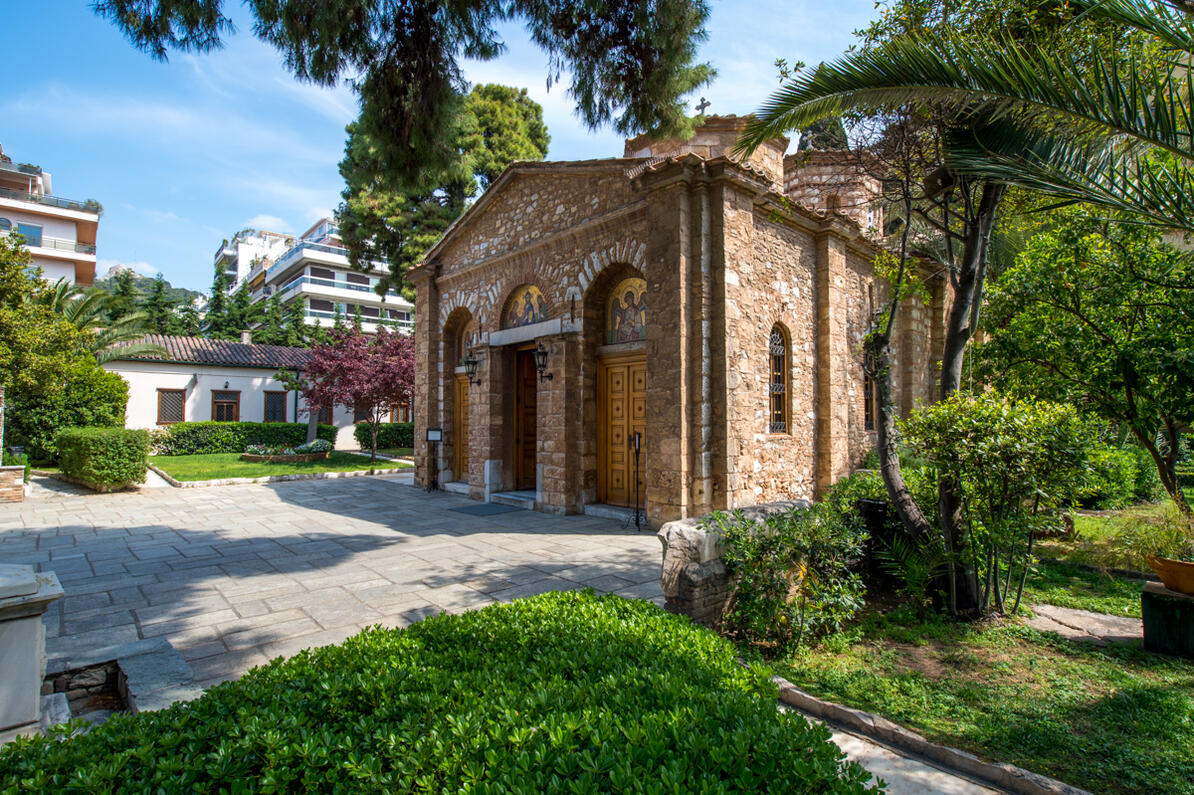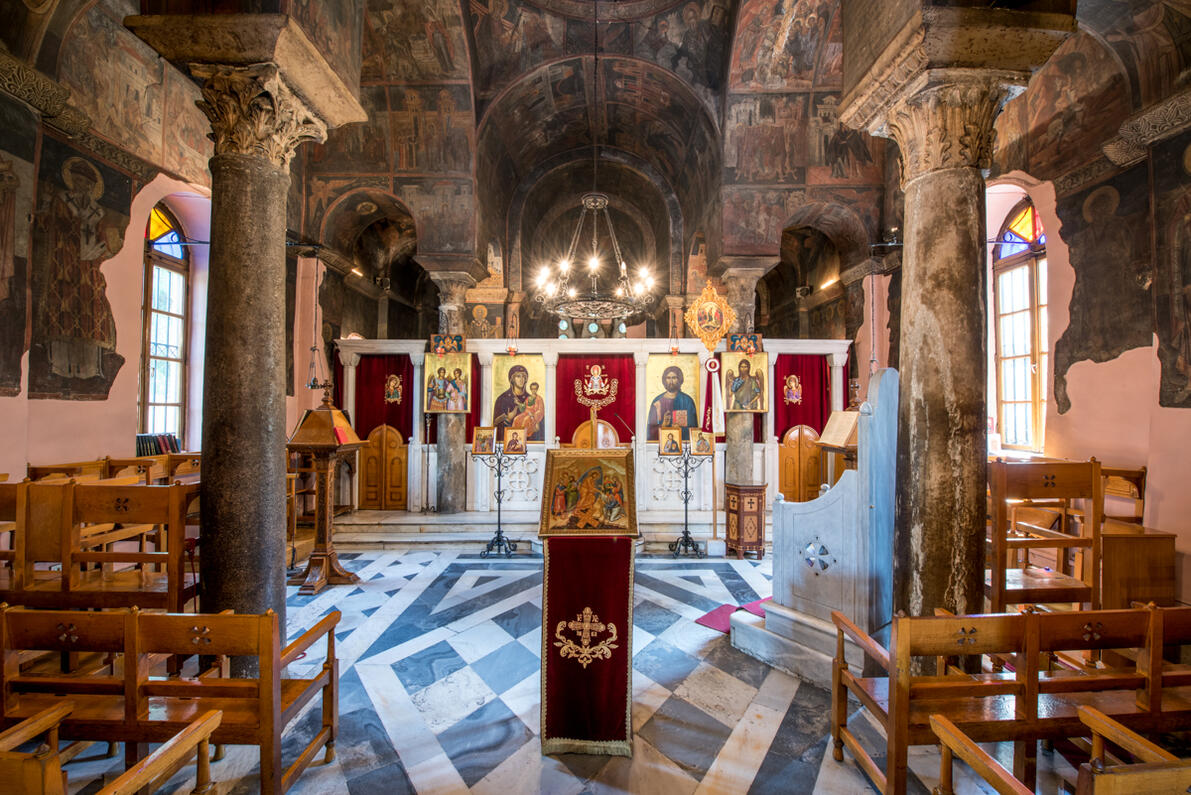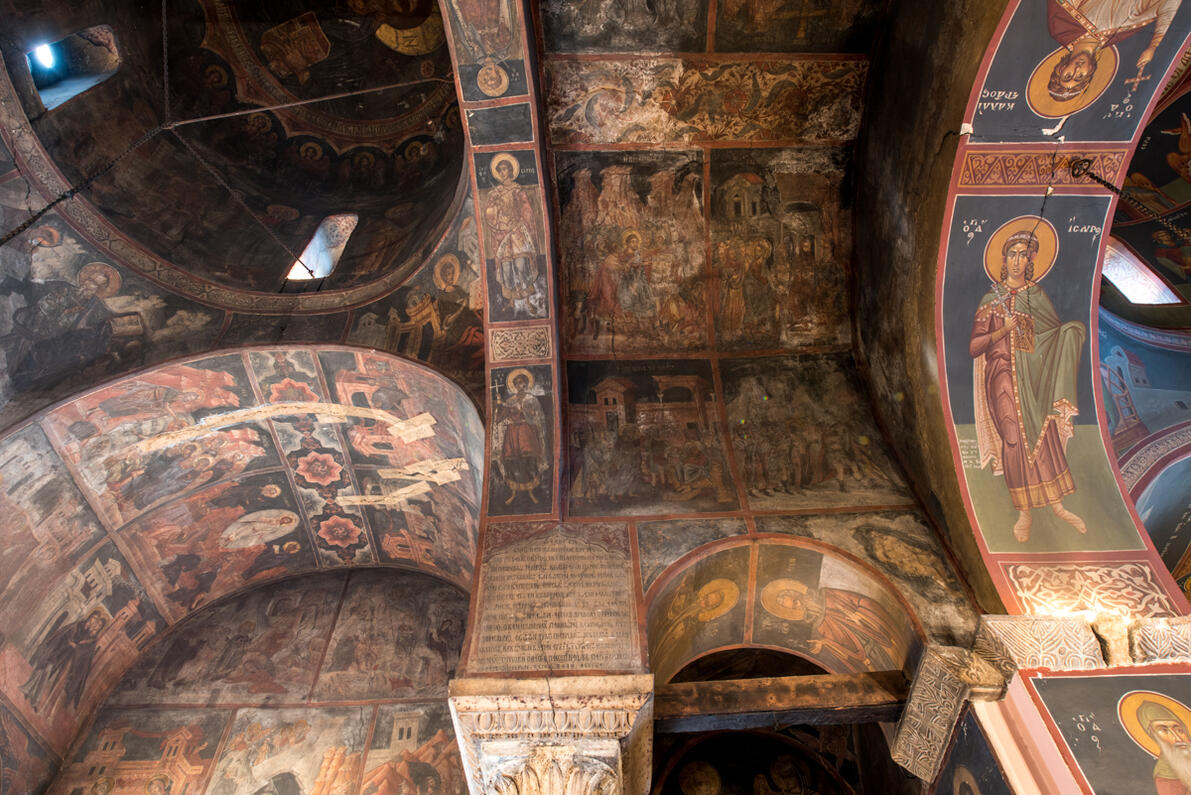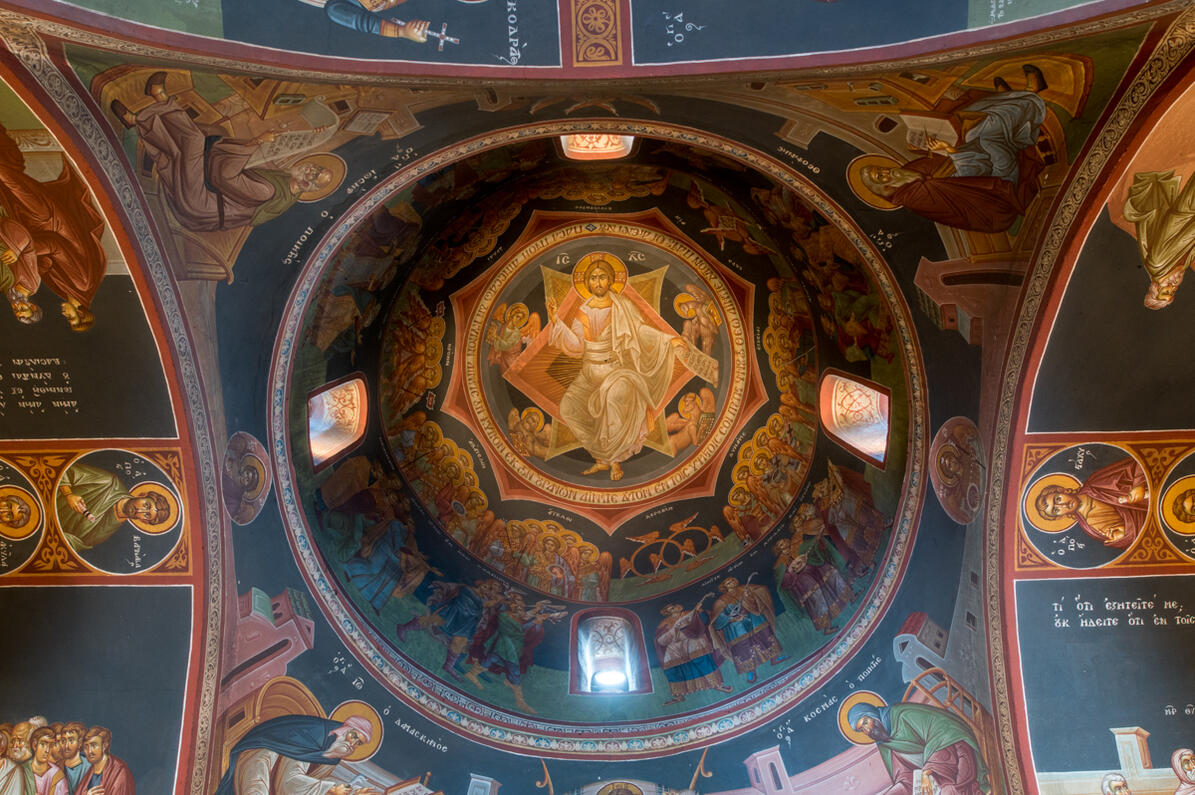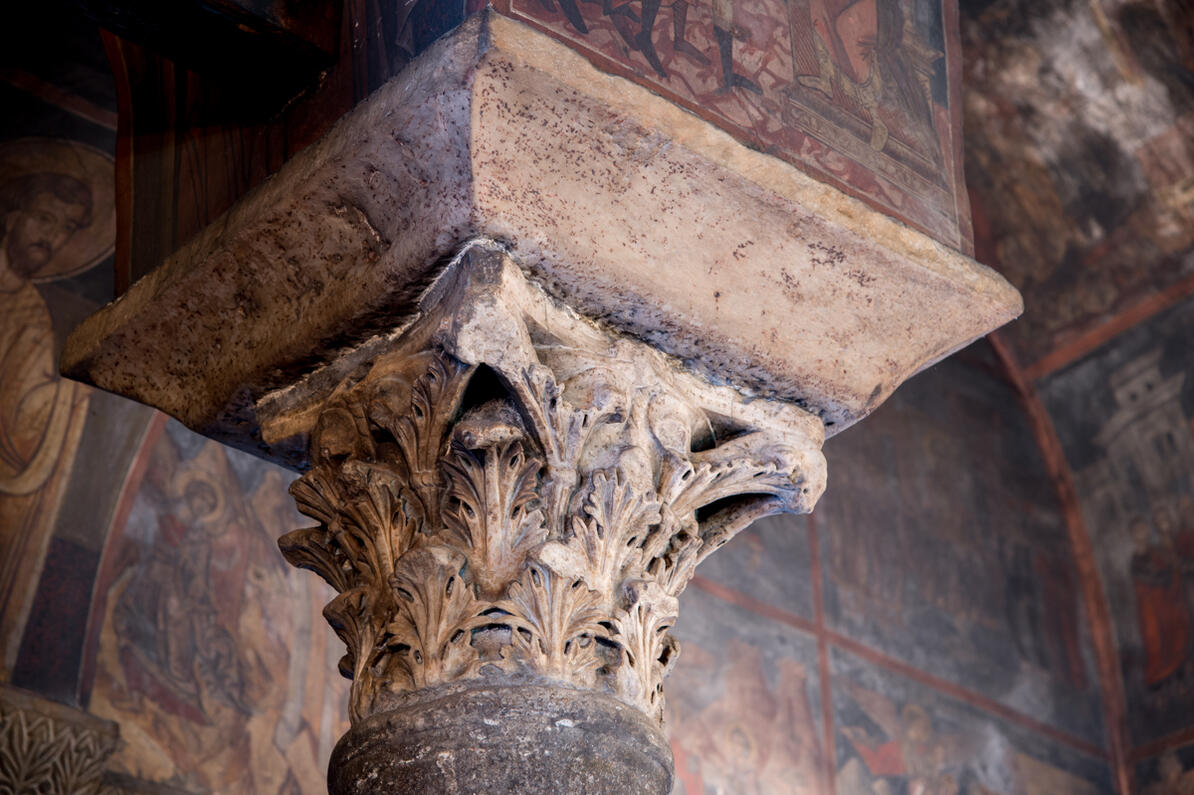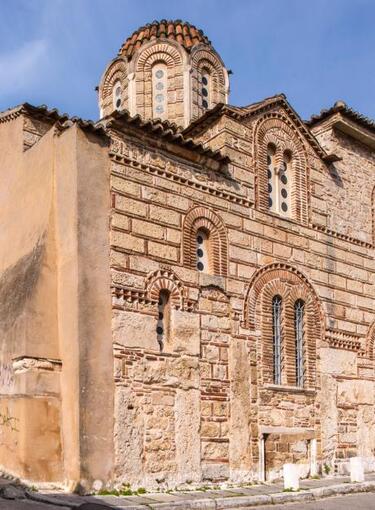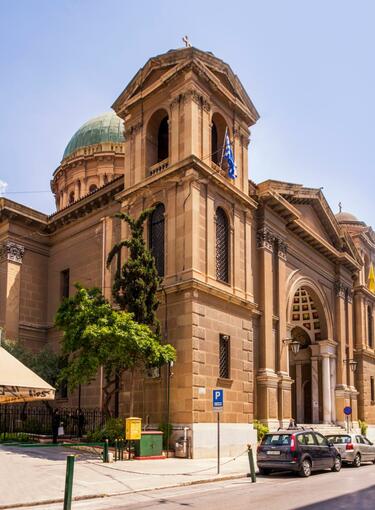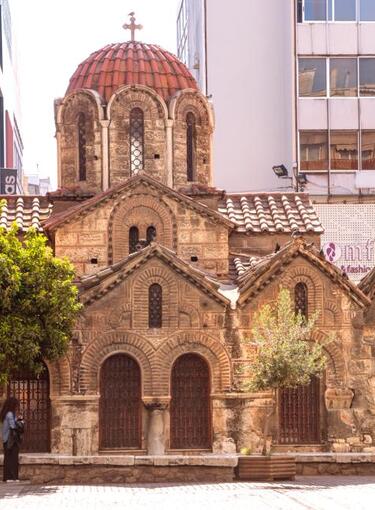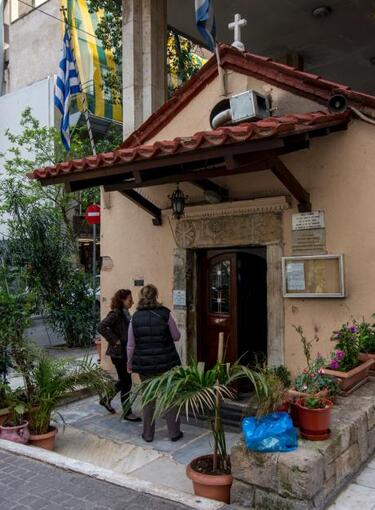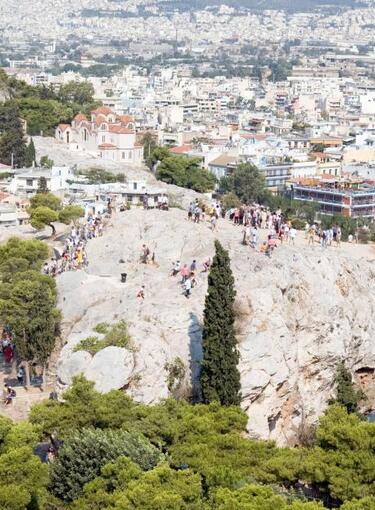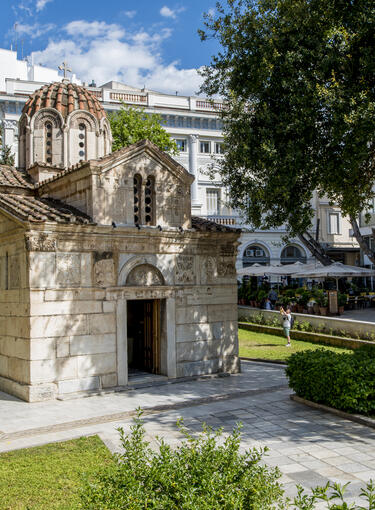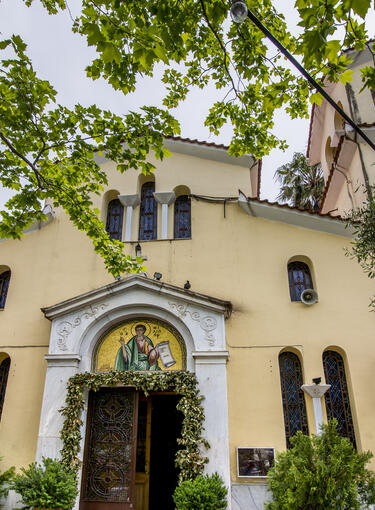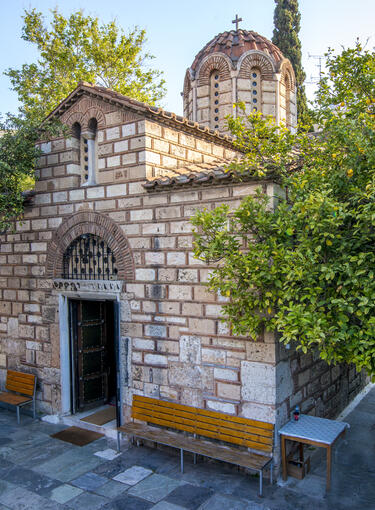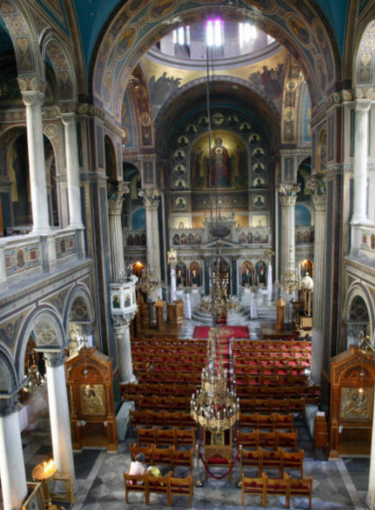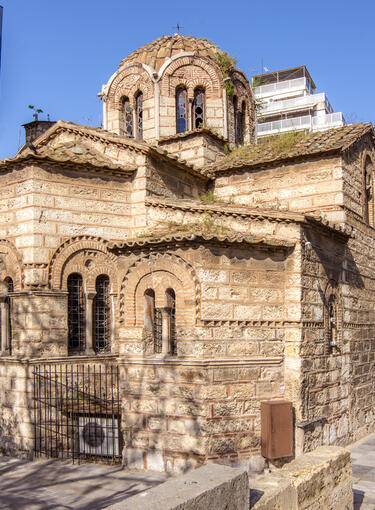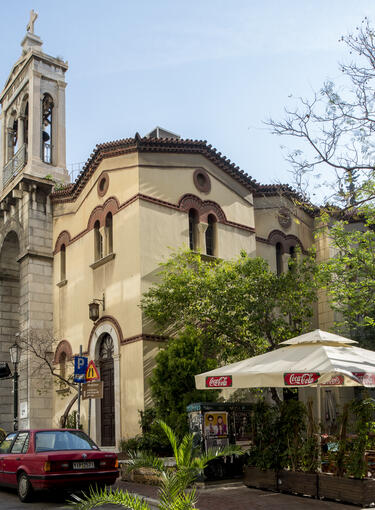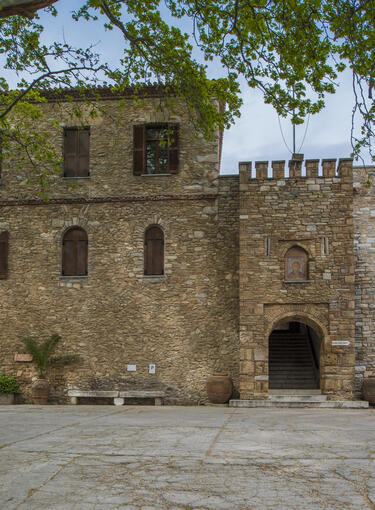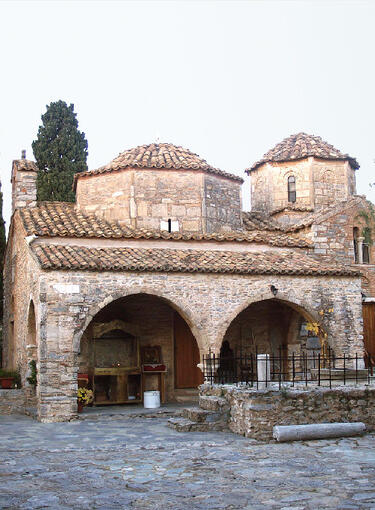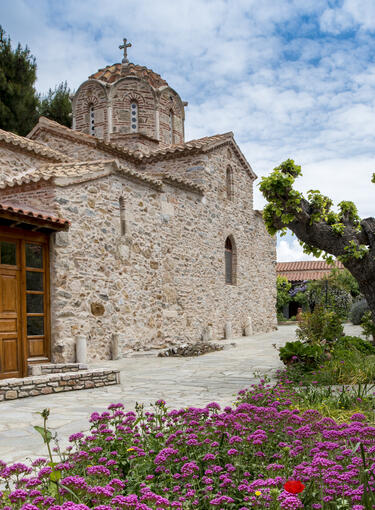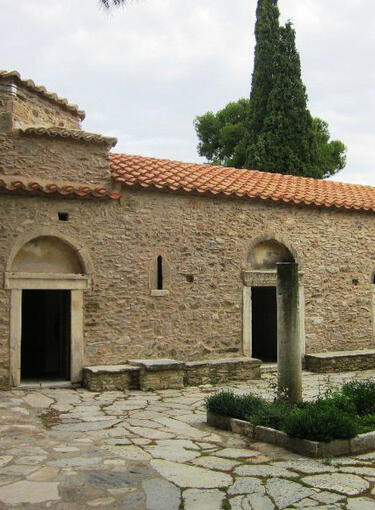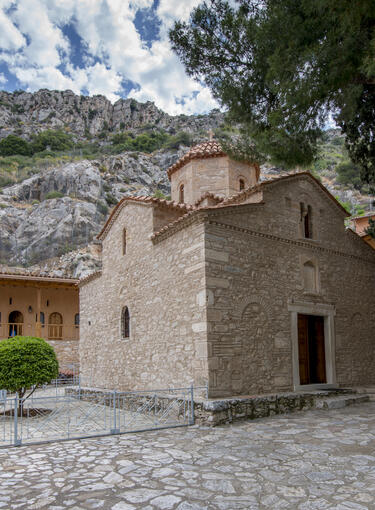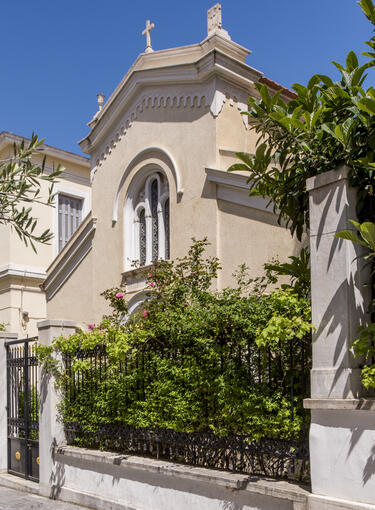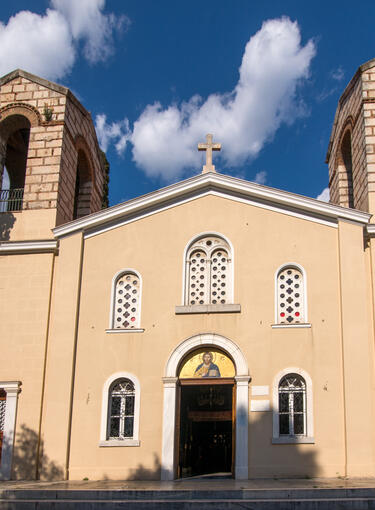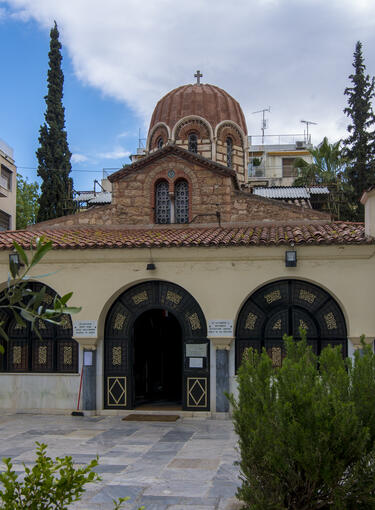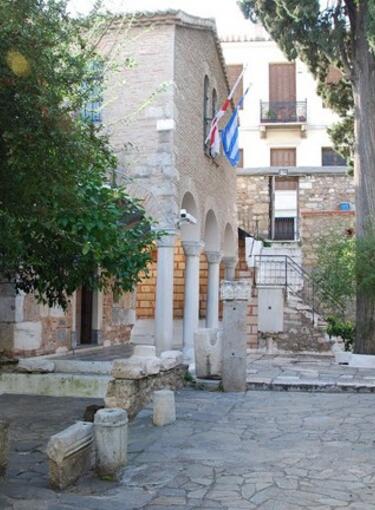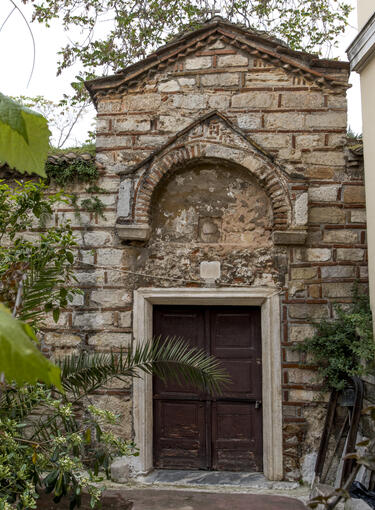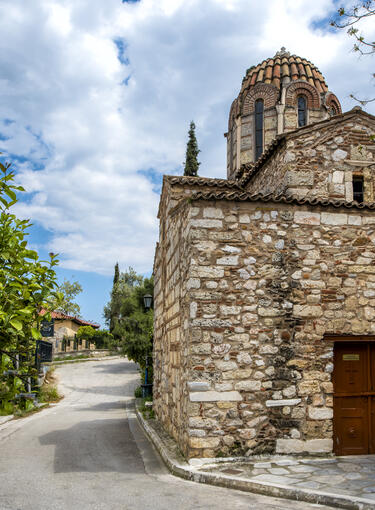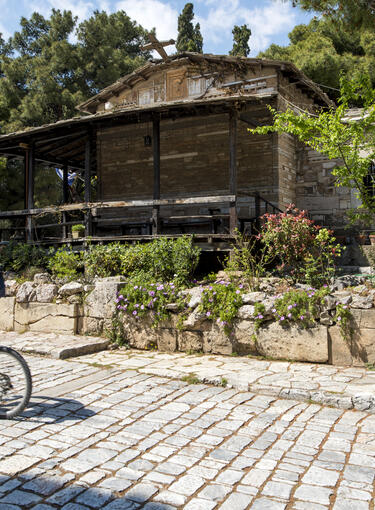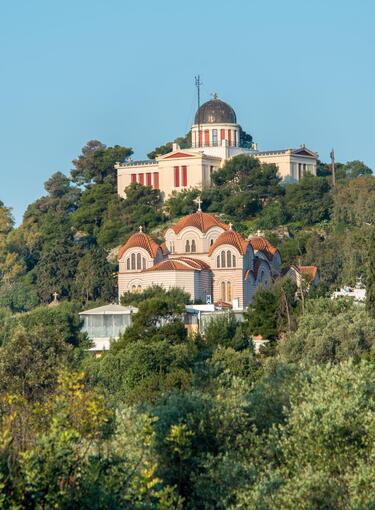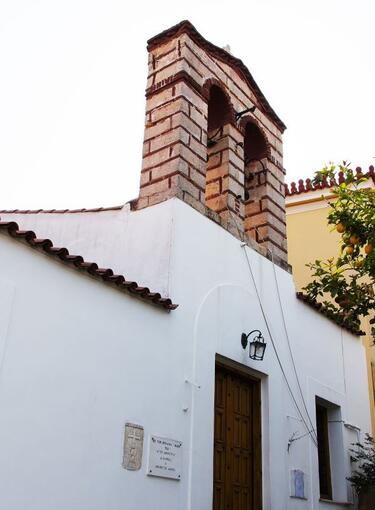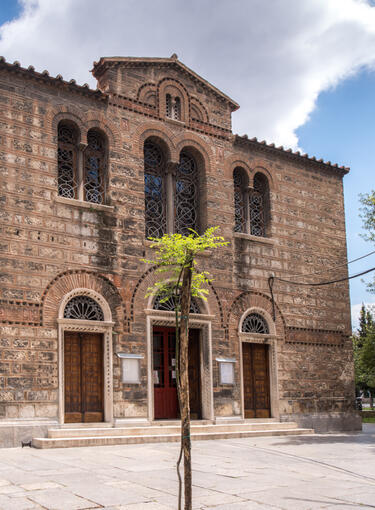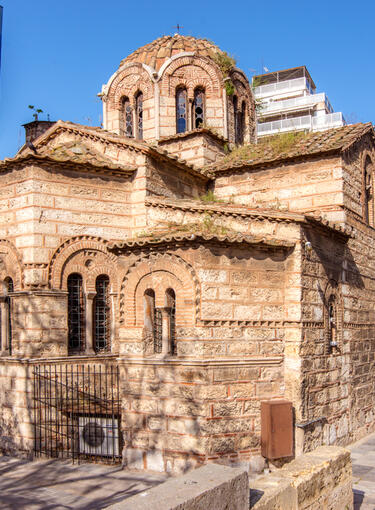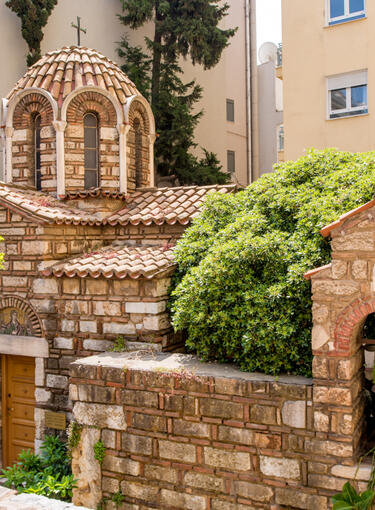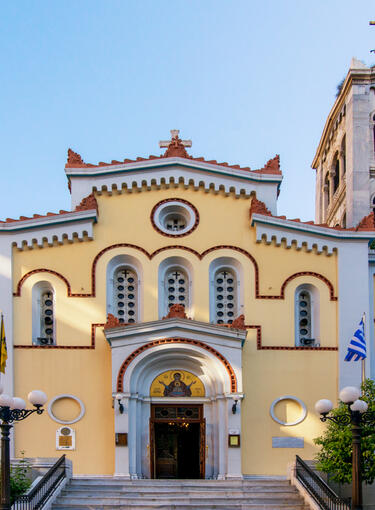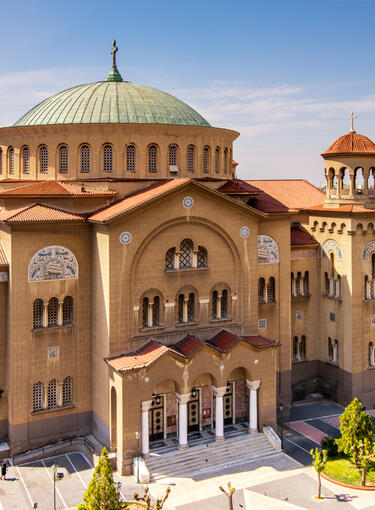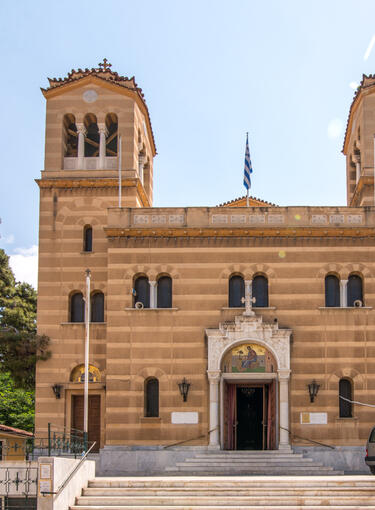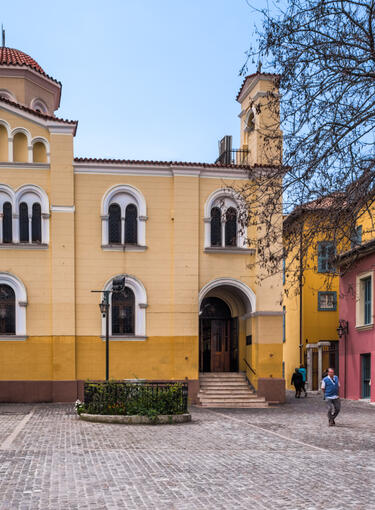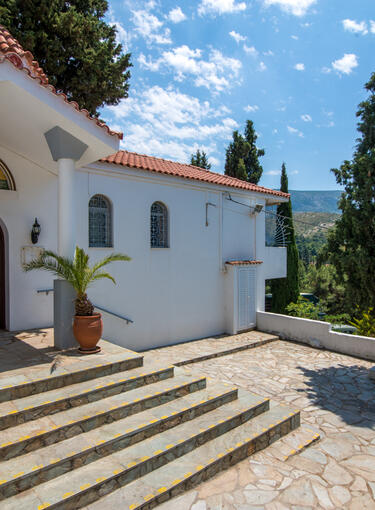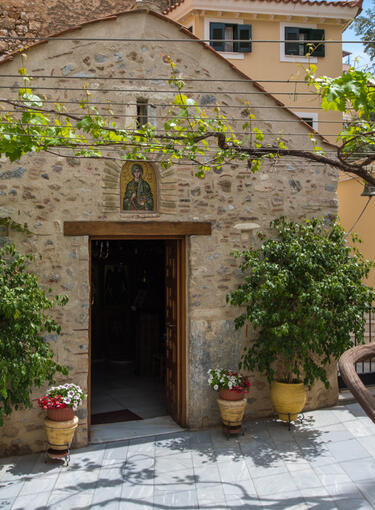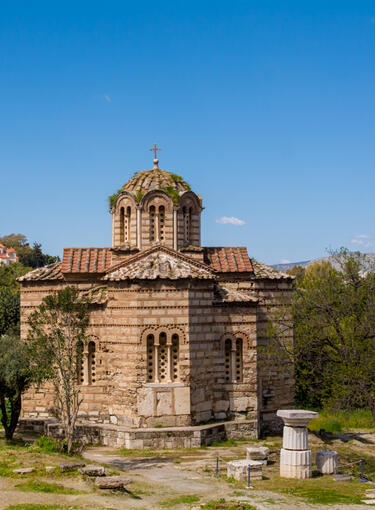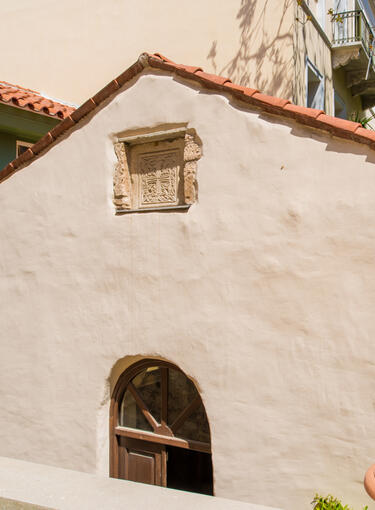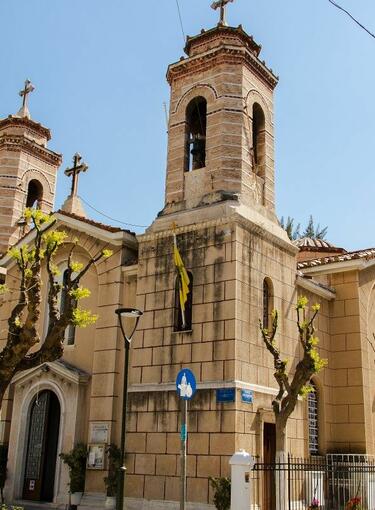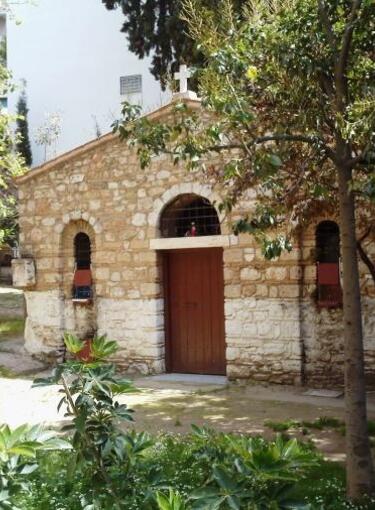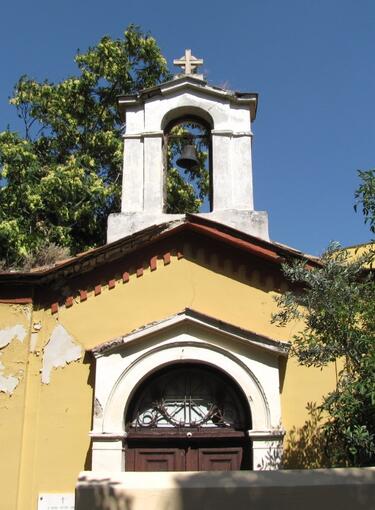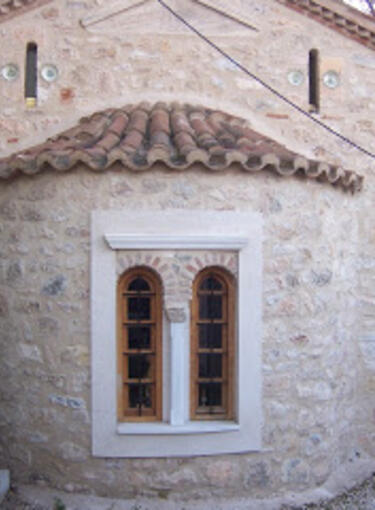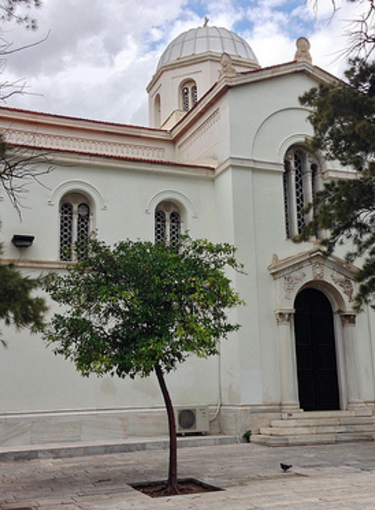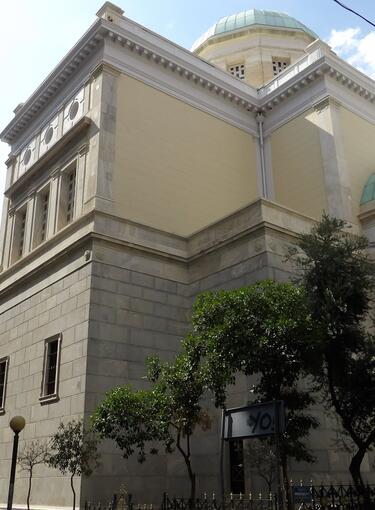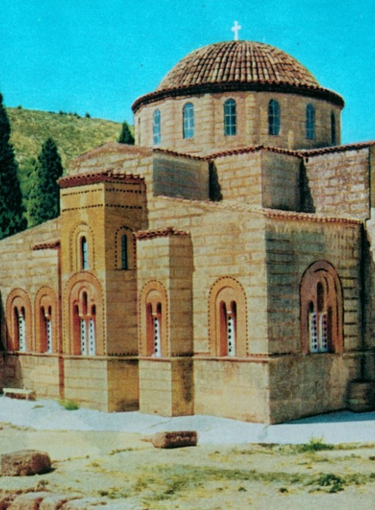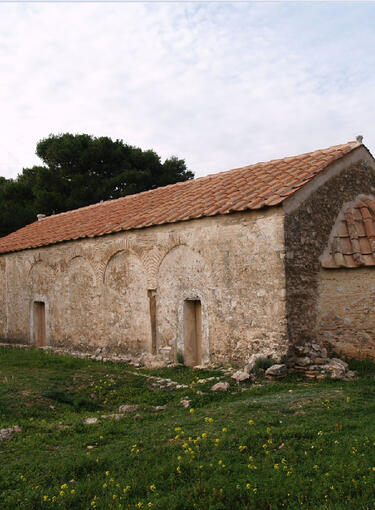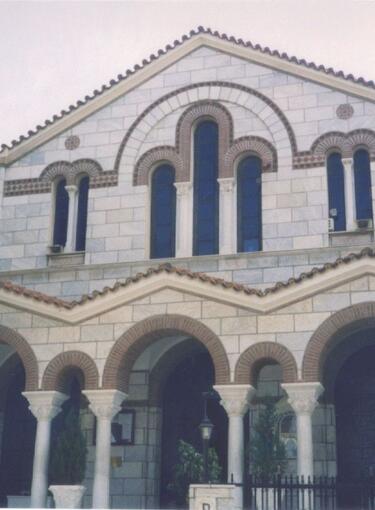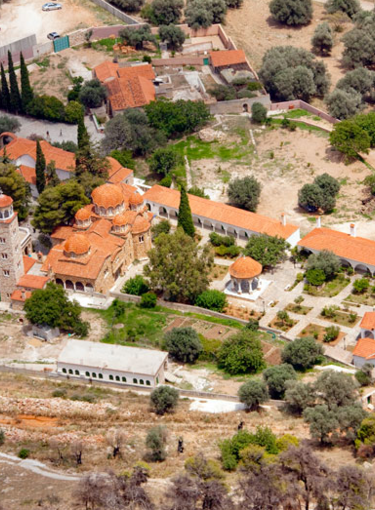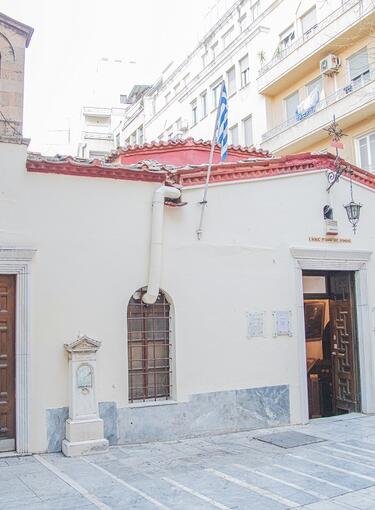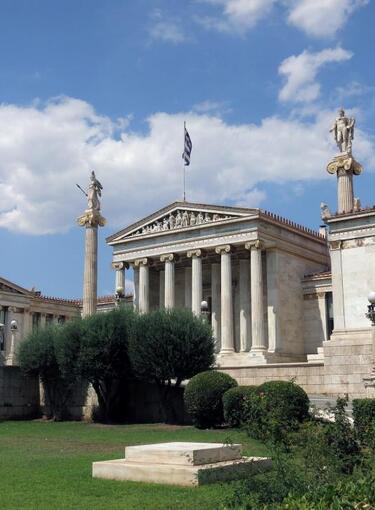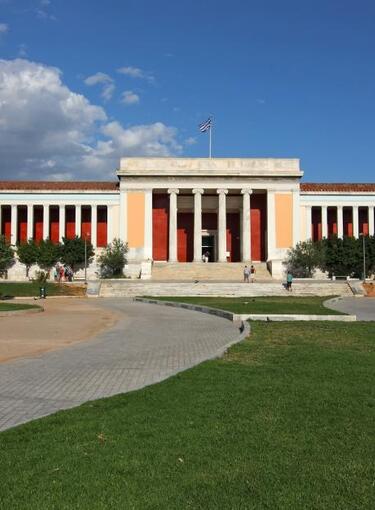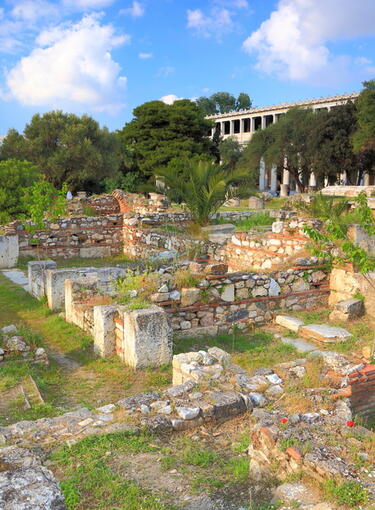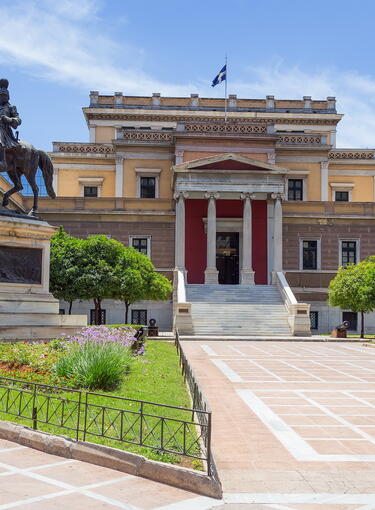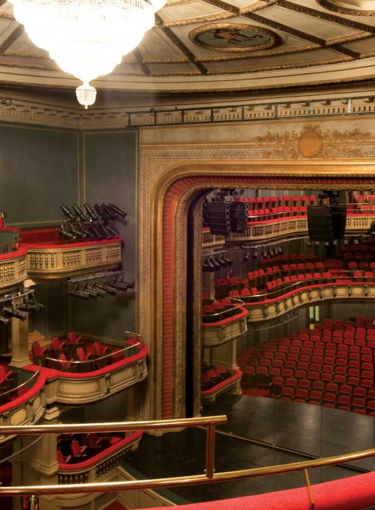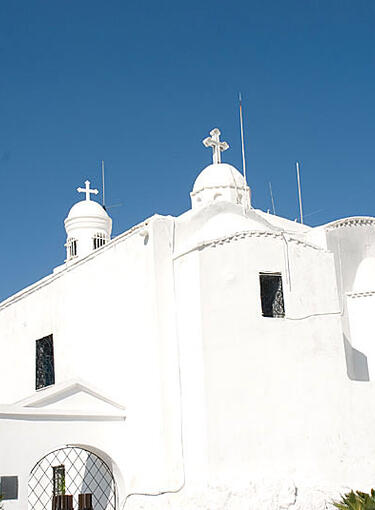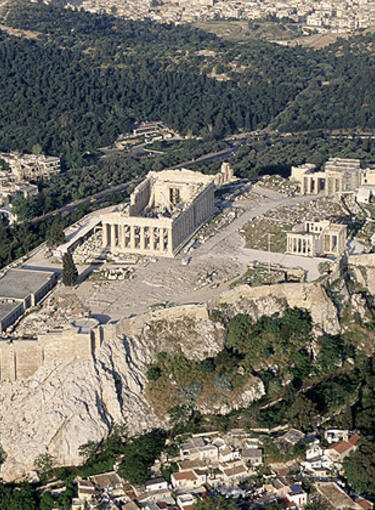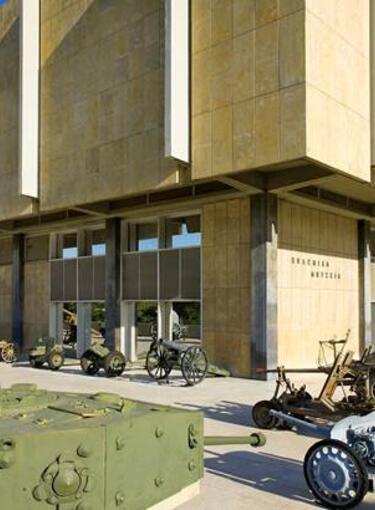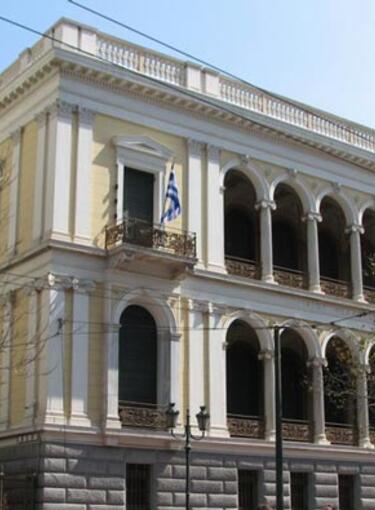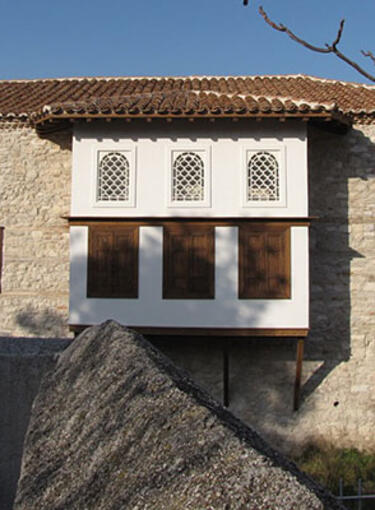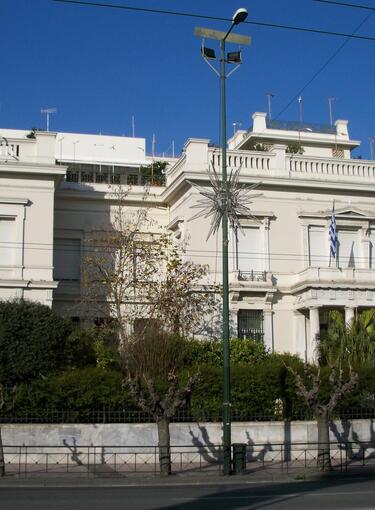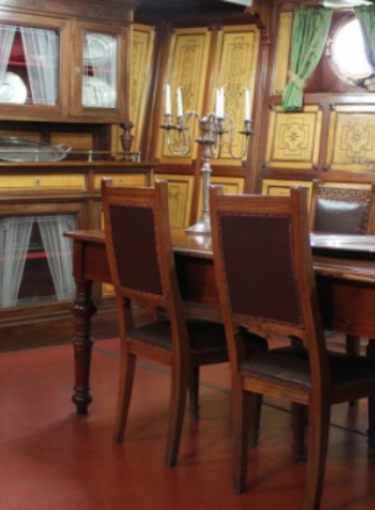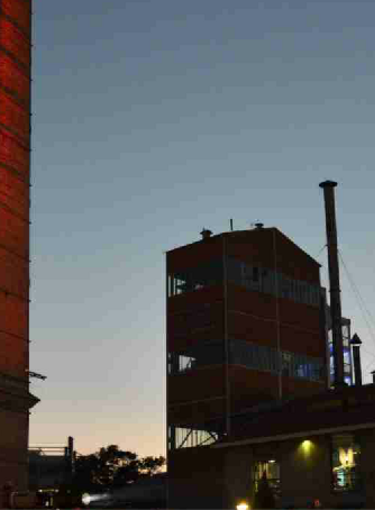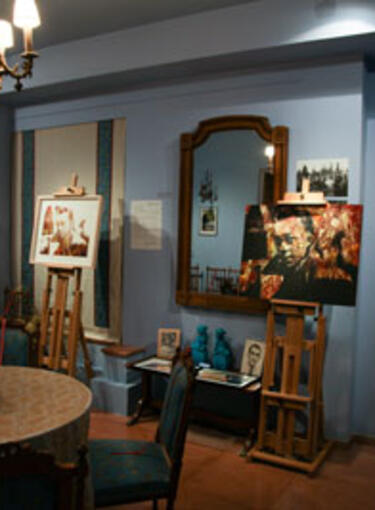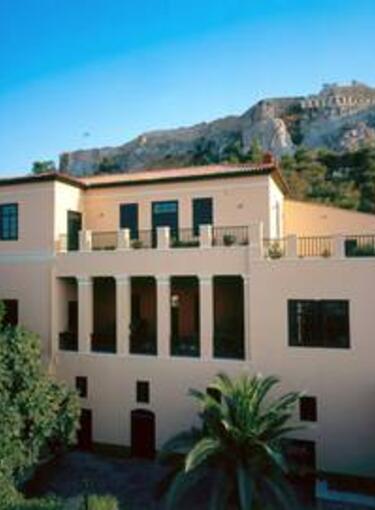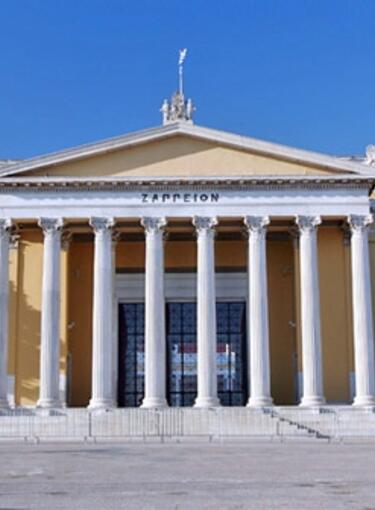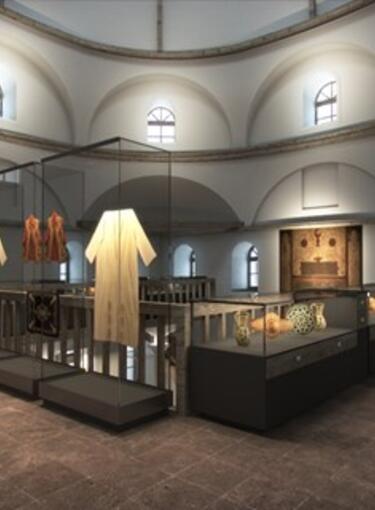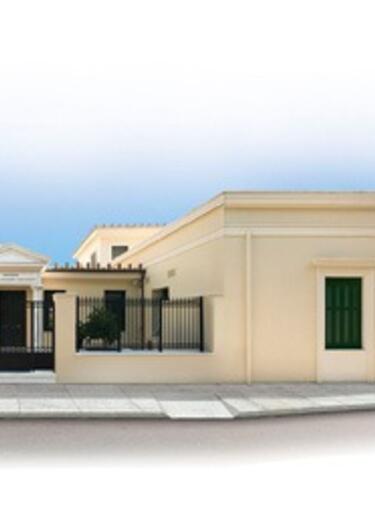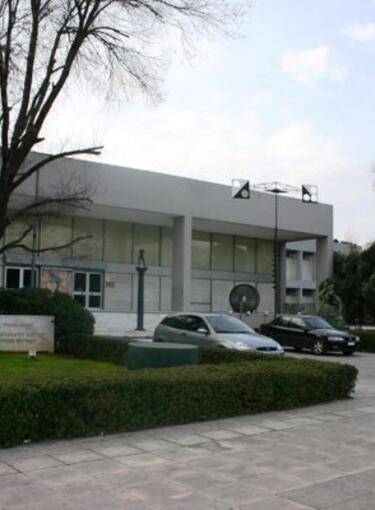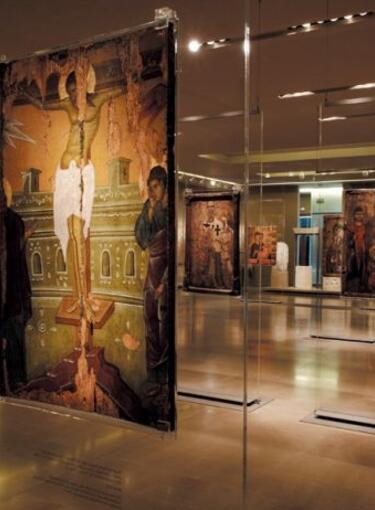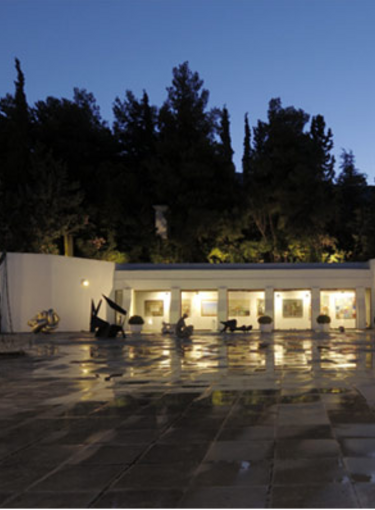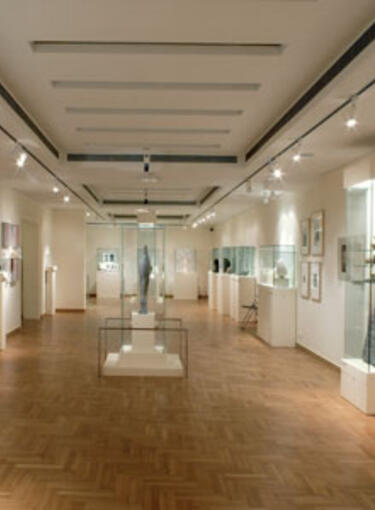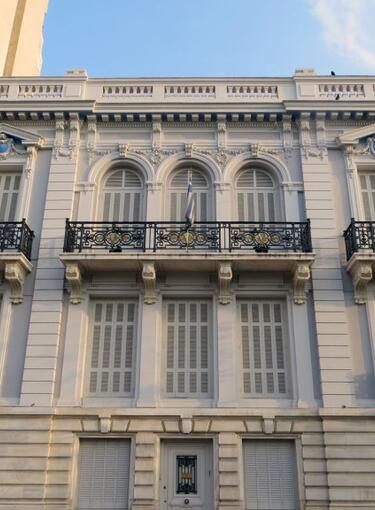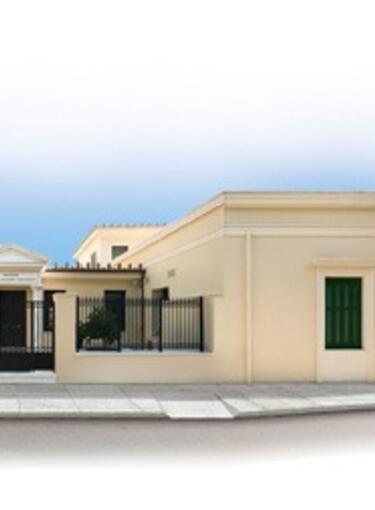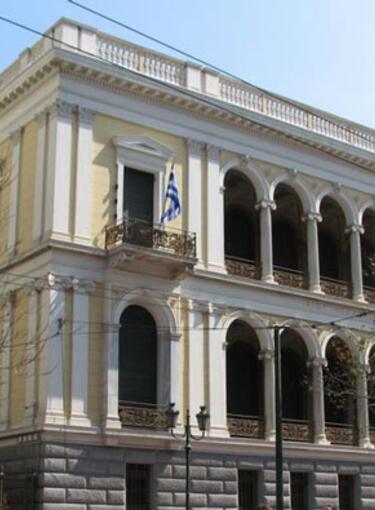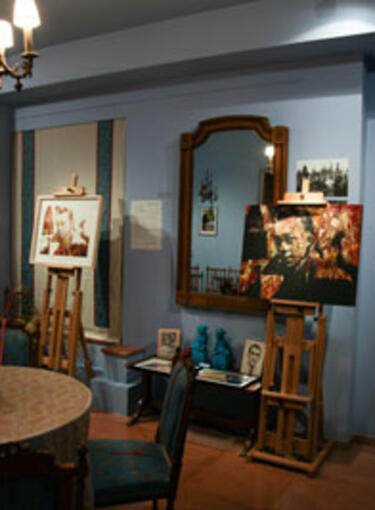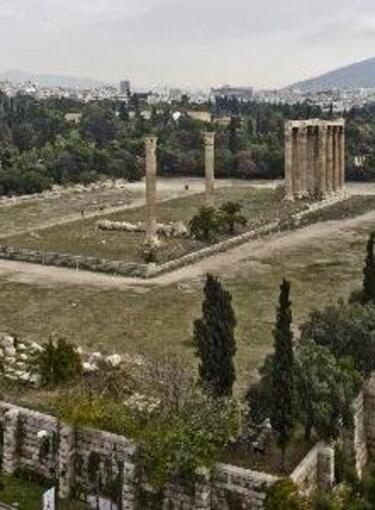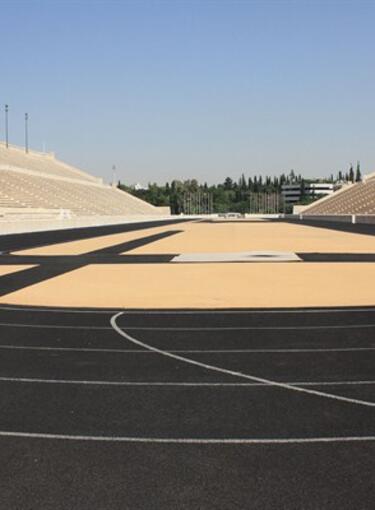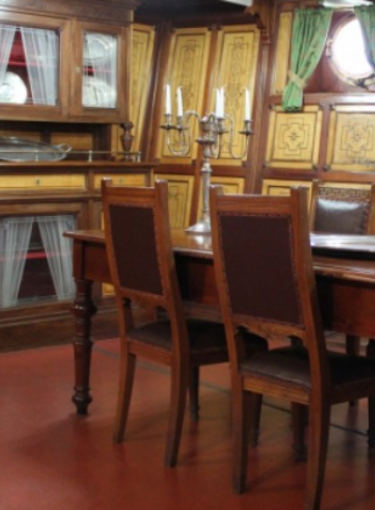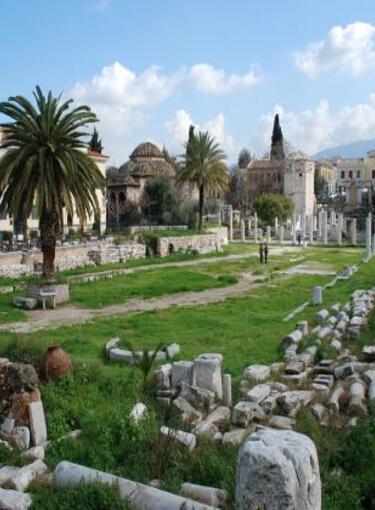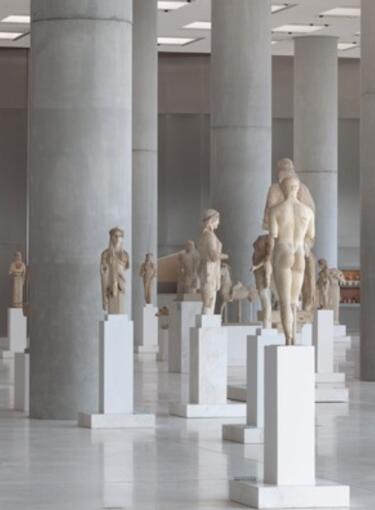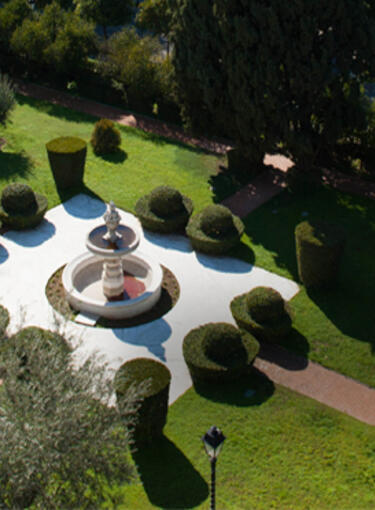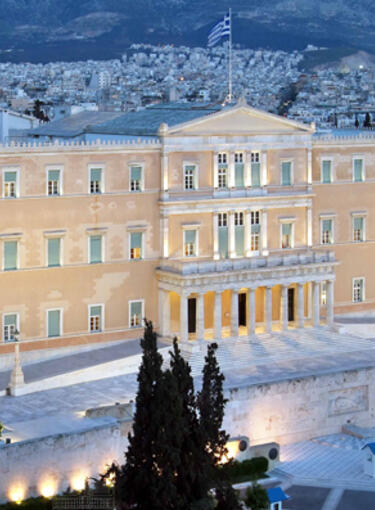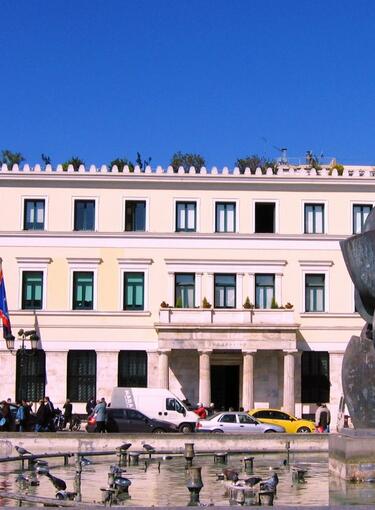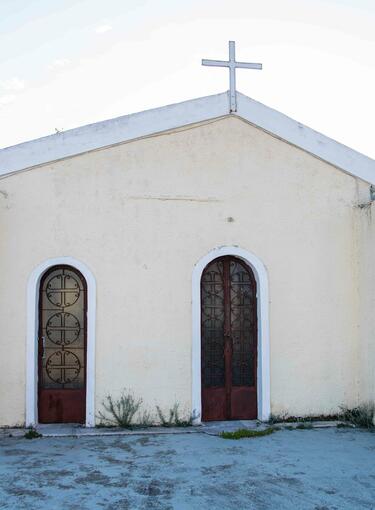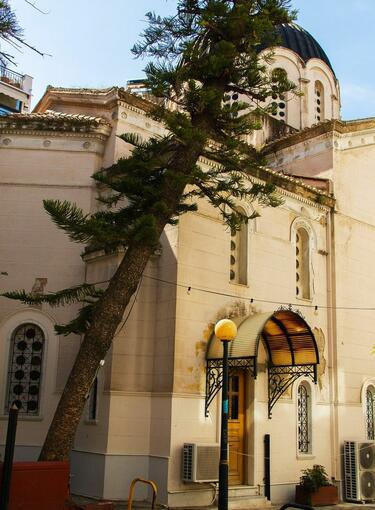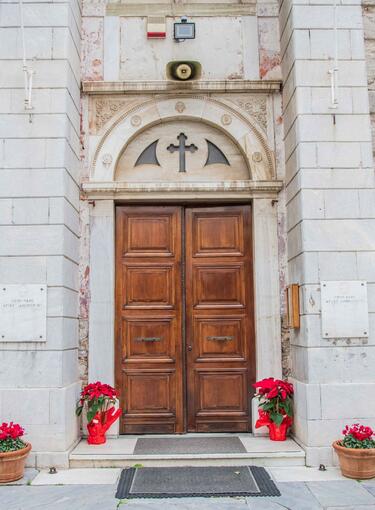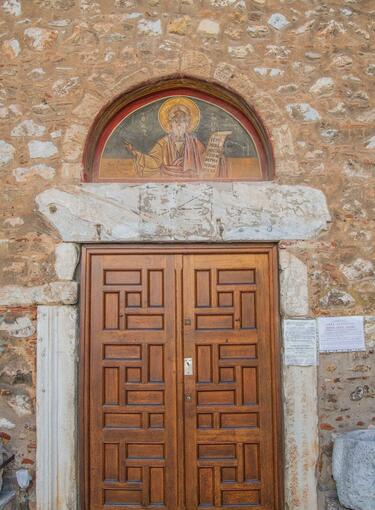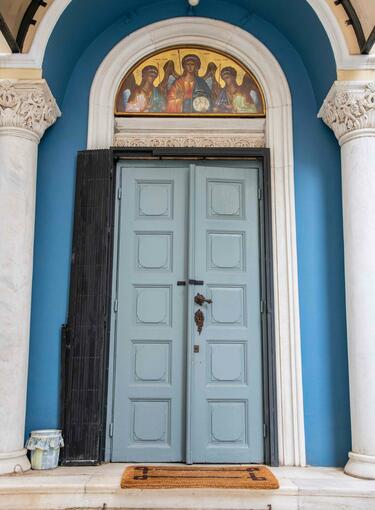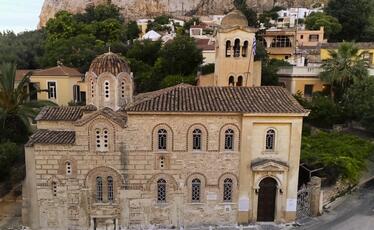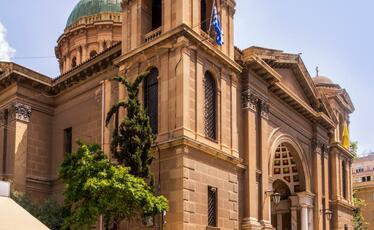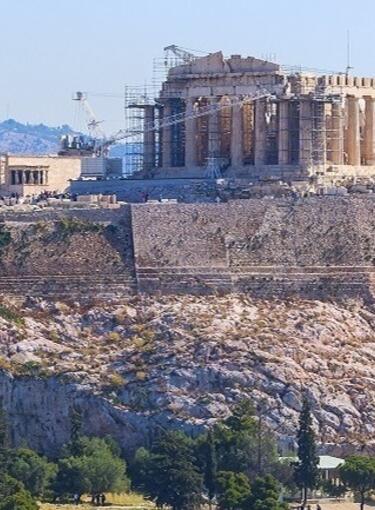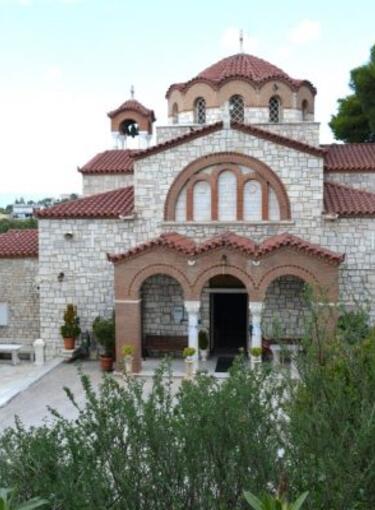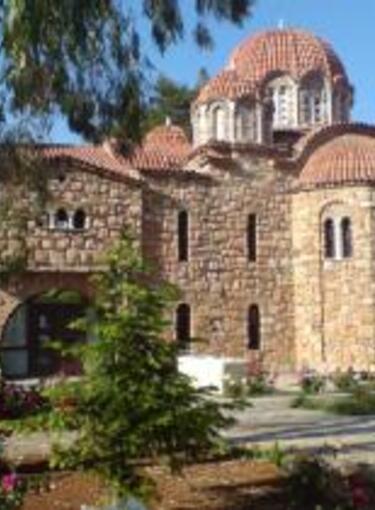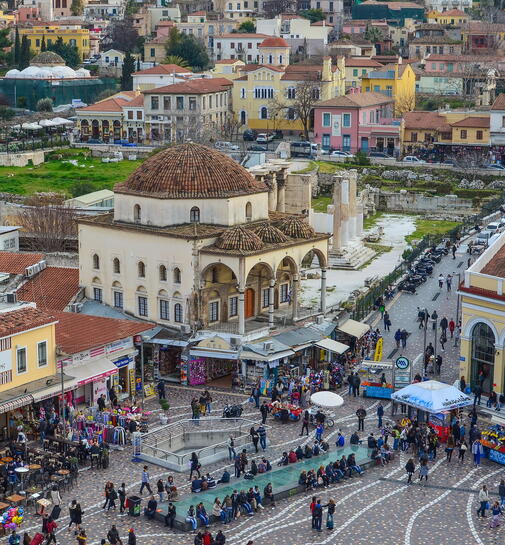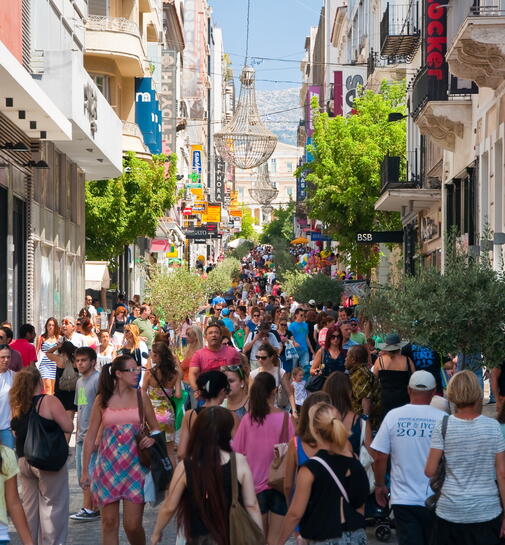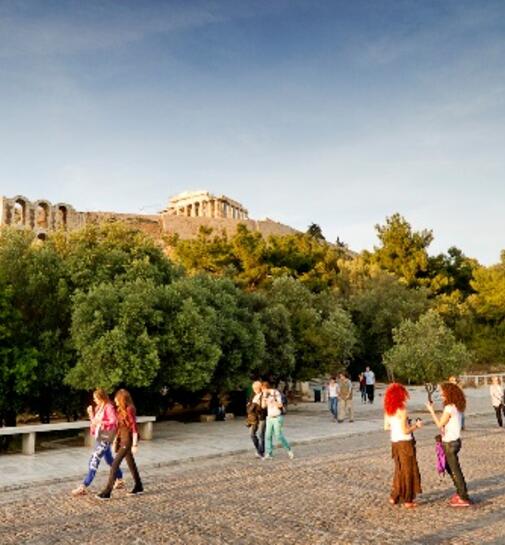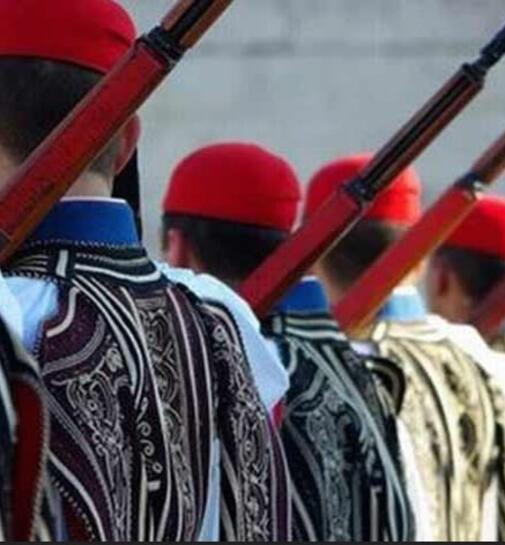Holy Monasteries
At Ioannis Gennadios street, behind the hospital “Evangelismos”, between the modern buildings of Athens emerges the catholicon of the Monastery of Asomatoi Taxiarches, known as the catholicon of the Petraki Monastery. Today it is located at a central spot, however when it was built, this area was wooded and outside the Late Roman walls of the city.
The monastery was founded initially in the Middle Byzantine period, in the end of the 10th century, but there are no surviving testimonies. It is known that in the 17th century the church of Taziarches was already in ruins and abandoned, it was the metochi of the Monastery of Agios Andreas Kareas and was named “Asomatoi of Koukoupoulis”. The present day name of the monastery is due to the monk Partenios, the doctor Petros (Petraki) Papastamatis from Dimitsana, who was a monk at the Monastery of Agios Ioannis Kareas and renovated the monastery of Taxiarches in 1673. As a matter of fact, from the family of Petrakis came a lot of its abbots. In 1777, with a sigil by the patriarch of Constantinople Sophronius the Monastery of Petraki became more ”important” and the Monastery of Kareas was its metochi. The monastery had great real estate property which donated it after the liberation of Greece for the construction of charitable institutions.
The catholicon belongs to the type of the complex four-columned, cross-in-square church. On its eastern side they have annexed a tripartite bema with semi-circular arches and on the western a narthex and an exonarthex, which was added in 1804. The initial part of the church, which survives in a better condition on the eastern side, dates from the end of the 10th century, while additions have probably been made in the end of the 12th century (octagonal dome, etc), as testified by sculpted doorframe, which is kept at the Byzantine Museum of Athens.
At its interior, the church was decorated with wall paintings, which according to the founding inscription were made in 1719, by the remarkable painter Georgios Markou from Argos, when Damaskinos was the abbot. The artist is influenced by the painting of the 16th century and its art is characterized by the simplification and a folklore depiction of figures. The themes of the icons of the church is particularly diverse and includes scenes from the life of Christ, the Virgin Mary, St John the Baptist, the archangels, the Akathist Hymn (a religious hymn in which the congregation is expected to remain standing in reverence), martyrdoms of saints, scenes from the Old Testament and isolated figures.
The monastery celebrates on the 8th of November, Pammegistoi Taxiarches, and on the 7th of February, Agios Parthenios.
Holy Monastery of Incorporeal Saints Petraki
At the heart of the bustling capital stands a significant monument of Orthodoxy, the prestigious Holy Monastery of Incorporeal Saints (the Archangels) the so-called Petraki Monastery. The work of the monastery not only at a spiritual but also at a national as well as a social level is inestimable.
The erection of the first small church is dated at the beginning of the 10th century A.D. This chapel, of Byzantine architecture, was built with rubble masonry. The continuous operation of the church had as a result its strong stress, until in the 17th century it was absolutely ‘spoilt and utterly derelict’. Then in the year 1673 A.D. the Peloponnesian Hieromonk Parthenios Petrakis, comes to Athens, renovates the church and founds the monastery. A related inscription preserved over the south-western column refers to the renovation of the Monastery by the Hieromonk Parthenios Petrakis.
The katholikon belongs to the type of the composite four-columned cruciform inscribed domed church. In the 15th century the small Byzantine narthex was replaced, whose relics one can discern in the side walls of the present esonarthex and in the 19th century was added also the exonarthex. The two small narthexes were unified harmoniously, with their masonry, typical of the era of the Ottoman rule, being rubble stones with fragments of tiles and bricks which were unified by the use of mortar.
The church constituted a unique specimen of the complex cruciform type in the Helladic area of the 10th century A.D. and yet owing to the many interventions, repairs and reconstructions in the period of the Ottoman rule but also subsequently, the form of the monument changed. But it never lost its Byzantine identity, as it retained its basic features. The dome is supported by four monolithic columns with Ionian and Corinthian capitals. There are two columns inside the sanctuary and two others in the nave. The masonry of the church follows the cloisonee system, while the immuration of dressed stones and marble pieces from a more ancient building has a purely decorative character.
The monument is comprised of three conchs, which from both the interior but also their exterior side are semicircular. The central conch is older and larger than the others and probably it is an early Christian survival while at the level of the start it bears a relief cornice which is comprised of rows of stylized palmettes alternating with crucifixes. It has a three–light window, whose lobes are divided by thin marble columnettes which bear relief columns, have a crucifix with four ivy leaves, with the small stem to the internal side of the church. At the external side it bears a palmette with ivy leaves at the top. The two side conchs each have of a two-light window.
The present dome of the church originates from the conversion of the original and is dated to approximately the 15th century A.D. The entire circumference of the dome is surrounded by two dentil courses. It is a mixture of circular and octagonal dome with concave sides and curvilinear angles, alternately perforated, forming four small windows with a rich ceramic decoration. The dome of the internal narthex is smaller and less elegant than the central dome. Via three gates the visitor can reach the nave, with the middle gate being sizeable and apsed, in contrast to the side gates which are clearly smaller.
The icon painting of the Katholikon was implemented in three phases. The first phase is dated in the 15th century, and small residues are preserved at the holy bema. During the second phase, in 1719, the nave was crafted by the known icon painter of the era, Georgios Markos, who delivered the icon painting of the church with Cretan-style frescoes. The murals of the internal and the external narthex are classified under the third phase and are works of the modern icon painter Karousos.
The murals of the nave start at a height of 1.5 meters from the ground. On the perimetrical walls saints are depicted and at other parts of the church scenes from the Holy Scripture are painted. On the dome is depicted the Pantokrator God, who is surrounded by a narrow fascia. Under the dome, in the pendentives, one notes the four Evangelists. In the barrel-vaults are depicted the houses [‘oikoi’] of the Akathist Hymn and at the extension to the Holy Bema is depicted Virgin Mary, who became the bridge for the sky to be united to the earth.
In the courtyard of the monastery one can behold parts of monolithic marble columns. A small ancient funerary plaque, on which is depicted a flower at the upper part and an inscription in the lower part, is preserved next to the tomb of the Teacher of the Nation Konstantinos Economou. A marble Byzantine sarcophagus is preserved without a cover and is placed in the middle of the southern side of the katholikon. Last, in the northern side of the katholikon have been immured architectural Byzantine parts of columns, architraves and plaques with sculpts. This can lead to the conclusion that on the site where the monastery was founded stood an ancient shrine perhaps until and including the 6th century A.D.
Informations
Additional
Date:
end of the 10th century
Season:
Byzantine
Celebrates:
7 February, 8 November
Holy Metropolis:
Archdiocese of Athens
Under the Supervision of:
Ephorate of Antiquities of Athens
Address:
Ioannou Genadiou, Kolonaki
Access:
Metro Evangelismos


